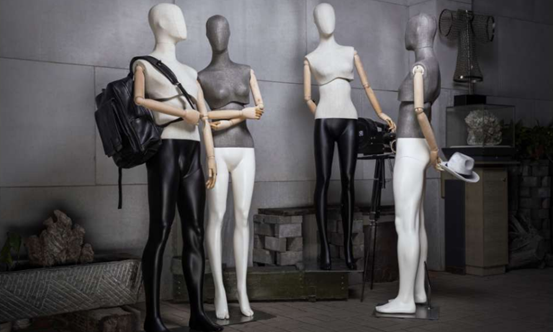CANCEL
2025-04-03 19:24:46
In the studios of fashion designers, those faceless mannequins stand quietly. They are called "silent models". These figures made of plastic, fiber or wood are quietly changing the basic logic of the clothing industry. Mannequins are not only tools for clothing production, but also key media connecting creativity and business, art and technology. Their role goes far beyond what is seen on the surface.
The human body model provides a physical carrier for three-dimensional thinking in clothing design. The designer's two-dimensional sketch is presented in three dimensions through the human body model, and the curvature of the fabric drape, the direction of the seams, and the overall proportional relationship can be intuitively displayed. The famous Japanese designer Issey Miyake once said: "Without the assistance of the human body model, my pleat design can only remain in my imagination forever." This transformation from two-dimensional to three-dimensional is the first step for clothing to move from concept to reality, and the human body model plays an irreplaceable role in this process.

In industrial production, the standardized clothing size system relies on accurate human body model data. By measuring the human body of different regions, age and gender groups, a model database is established, making large-scale clothing production possible. Research by the German Institute of Textile Technology shows that the use of 3D human body model technology can reduce the number of sample modifications by 40%, significantly improving production efficiency. These lifeless models actually carry the wisdom of ergonomics.

In the contemporary clothing industry, human model technology is undergoing a digital revolution. 3D scanning and virtual fitting technology extend traditional physical models to the digital field. A well-known American clothing brand has shortened the new product development cycle by 30% through a virtual human model system. This combination of virtual and real applications has not only changed the design process, but also reshaped the response speed of the supply chain.

Today, when sustainable development has become an industry consensus, digital human models reduce the production of physical samples and reduce resource waste. From simple models filled with straw in the Renaissance to today's intelligent systems that integrate AI technology, human models have always silently promoted the evolution of the clothing industry. They are like the "skeleton" of the industry, supporting the transformation process from creativity to products. In this industry that pursues rapid iteration, the role of human models will continue to deepen, not only as a tool, but also as a core hub that integrates design, technology and business. The next time you pass by the window of a clothing store, you may cast a different eye on those silent models - they are the most basic innovators in the fashion industry.